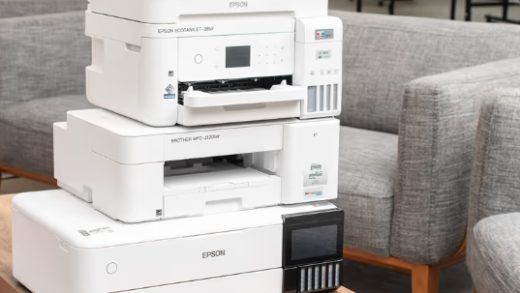As the world increasingly turns to renewable energy and electric vehicles (EVs), the demand for efficient, sustainable, and high-capacity batteries has never been more pressing. Lithium-ion batteries have dominated the market for decades, powering everything from smartphones to electric cars. However, the limitations of lithium, including resource scarcity, environmental concerns, and safety issues, have prompted researchers and companies to explore alternative battery technologies. This article delves into the promising candidates poised to replace lithium-ion batteries, examining their potential, challenges, and implications for the future of energy storage.
The Limitations of Lithium-Ion Batteries
Before we explore alternatives, it’s essential to understand why the search for new battery technologies is critical. Lithium-ion batteries, while efficient, face several challenges:
1. Resource Scarcity: Lithium is primarily sourced from a few countries, leading to geopolitical concerns and supply chain vulnerabilities.
2. Environmental Impact: Mining lithium can have detrimental effects on local ecosystems, and the extraction process often consumes significant water resources.
3. Safety Concerns: Lithium-ion batteries are prone to overheating and can catch fire if damaged or improperly handled.
4. Energy Density Limits: While lithium-ion batteries have a decent energy density, they may not meet the future demands of high-performance applications, such as long-range electric vehicles and grid storage.
Promising Alternatives to Lithium-Ion Batteries
1. Sodium-Ion Batteries
Sodium-ion batteries are emerging as a strong contender to replace lithium-ion technology. Sodium is abundant and inexpensive, making it an attractive alternative. Recent advancements have shown that sodium-ion batteries can achieve energy densities comparable to lithium-ion batteries, with the added benefit of lower environmental impact.
Advantages:
– Cost-Effectiveness: Sodium is significantly cheaper than lithium, which could lead to lower battery costs.
– Abundance: Sodium is widely available, reducing supply chain risks.
Challenges:
– Energy Density: While improving, sodium-ion batteries still lag behind lithium-ion in energy density.
– Cycle Life: Research is ongoing to enhance the longevity and performance of sodium-ion batteries.
2. Solid-State Batteries
Solid-state batteries utilize a solid electrolyte instead of the liquid electrolyte found in lithium-ion batteries. This technology promises higher energy densities, improved safety, and longer lifespans.
Advantages:
– Safety: Solid-state batteries are less prone to overheating and fires, addressing one of the significant safety concerns of lithium-ion technology.
– Higher Energy Density: They can potentially offer two to three times the energy density of traditional lithium-ion batteries.
Challenges:
– Manufacturing Complexity: The production of solid-state batteries is currently more complex and costly.
– Material Challenges: Finding suitable solid electrolyte materials that can conduct ions efficiently remains a hurdle.
3. Lithium-Sulfur Batteries
Lithium-sulfur (Li-S) batteries are another promising alternative, boasting a theoretical energy density significantly higher than that of lithium-ion batteries. Sulfur is abundant and inexpensive, making this technology economically attractive.
Advantages:
– High Energy Density: Li-S batteries can potentially deliver five times the energy density of lithium-ion batteries.
– Environmental Benefits: Sulfur is a byproduct of various industrial processes, reducing the environmental footprint.
Challenges:
– Cycle Stability: Li-S batteries currently suffer from poor cycle stability and capacity fading over time.
– Conductivity Issues: Sulfur has low electrical conductivity, necessitating the development of advanced cathode materials.
4. Graphene Batteries
Graphene, a single layer of carbon atoms arranged in a two-dimensional lattice, has garnered attention for its exceptional electrical conductivity and mechanical strength. Graphene batteries can be designed to enhance the performance of existing lithium-ion technology or serve as a standalone alternative.
Advantages:
– Fast Charging: Graphene batteries can charge significantly faster than traditional lithium-ion batteries.
– Higher Capacity: They have the potential for higher energy and power densities.
Challenges:
– Cost of Production: The current methods for producing high-quality graphene are expensive and not yet scalable for mass production.
– Research and Development: While promising, graphene battery technology is still largely in the research phase.
The Future of Battery Technology
As we move toward a more sustainable future, the transition from lithium-ion batteries to alternative technologies will be crucial. Each of the alternatives discussed has its unique advantages and challenges, and ongoing research is essential to overcome these hurdles.
The future of energy storage will likely involve a combination of these technologies, tailored to specific applications and needs. For instance, sodium-ion batteries may find their niche in grid storage, while solid-state batteries could revolutionize electric vehicles.
Conclusion
The quest for a lithium replacement is not merely about finding a substitute; it’s about innovating for a sustainable future. As researchers and companies continue to explore and develop new battery technologies, we stand on the brink of a new era in energy storage. The next generation of batteries promises not only to enhance performance and safety but also to align with our global sustainability goals. The transition may be gradual, but the potential impact on our energy landscape is profound.


